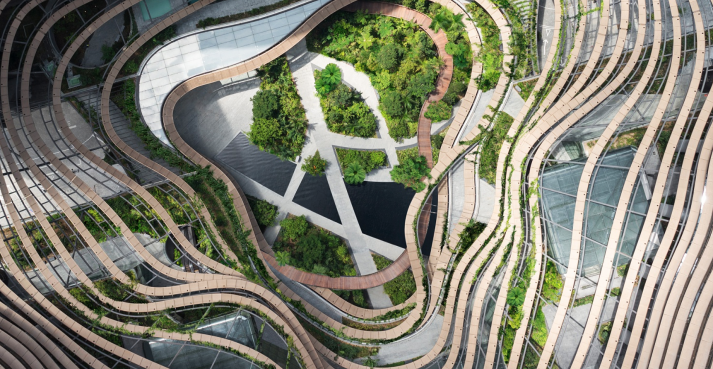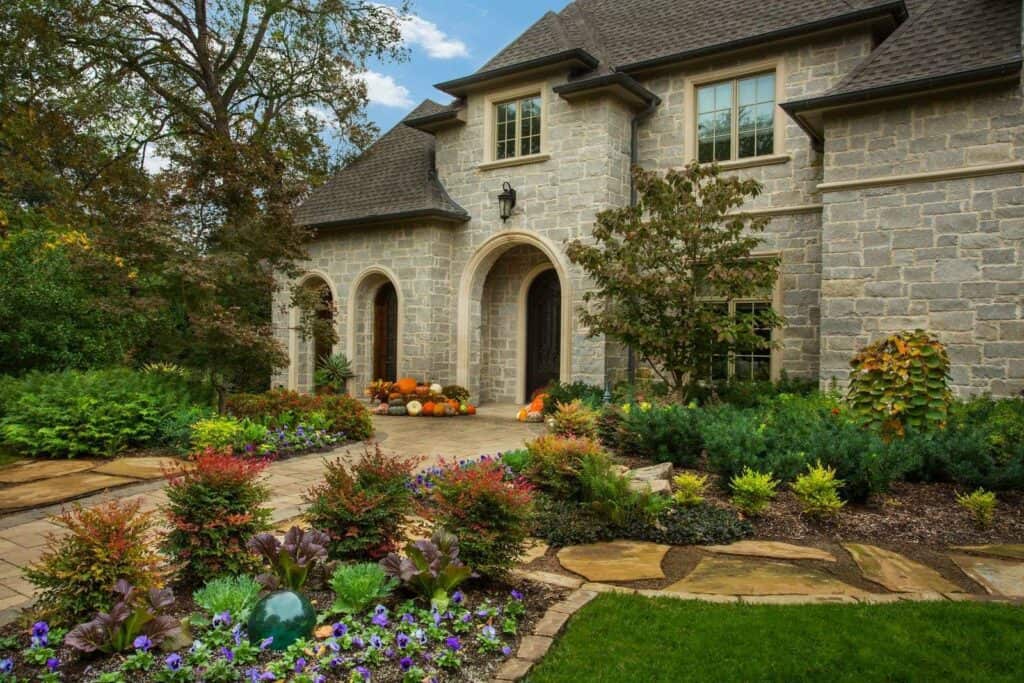The Facts About Landscape Design Uncovered
The Facts About Landscape Design Uncovered
Blog Article
The 4-Minute Rule for Landscape Design
Table of ContentsLandscape Design Things To Know Before You BuyAll About Landscape DesignIndicators on Landscape Design You Need To KnowAll about Landscape DesignThe Landscape Design PDFs
Formal style motif. Credit: Gail Hansen, UF/IFAS The backyard is an expansion of the home where a selection of activities occur. A yard can typically be divided right into three areas: public (the front yard), exclusive (the back backyard), and solution (commonly the side yard). The place of task areas depends primarily on the kind of area, the dimension of room needed, the sort of task, and the preferred closeness to other activities and structures.The outdoors wall of your home frequently offers as the initial wall surface or starting point of an outdoor room. Incompatible usages must be separated, and relevant activities, such as food preparation and eating, should be created to make the yard more reliable and pleasurable. When using hardscape to develop spaces, utilize construction material similar to that made use of in your house for continuity from your home right into the garden.
Connected areas. Credit Scores: Gail Hansen, UF/IFAS Making use of comparable hardscape attributes and repeating plants draws the eye around the yard. Essential factors along the road can be highlighted with plantings or functions that attract focus and urge movement in a specific instructions. Relocating along the path takes an individual from one location to the following and permits the user to have a range of experiences.
Things about Landscape Design

For mental comfort plants are utilized as physical or suggested barriers for privacy and security. Physical barriers block both the view and access to a room and consist of fences, walls and plant bushes. Suggested barriers, typically reduced growing plants, obstruct access yet not the sight (Number 9). Other features of plants include cleaning the air, protecting against disintegration and soil loss, keeping dampness in the dirt, and returning organic matter to the dirt.
Physical and indicated barriers. Credit History: Gail Hansen, UF/IFAS For these reasons, the sorts of plants to be used (such as trees, hedges, or groundcovers) must be chosen in the very early phases of preparation (Landscape Design). Plant types are selected for their useful capacities to ensure that their future objective and needed area can be thought about at the same time

Landscape Design - Questions
Each plant mass is in front of, behind, or alongside, an additional mass. Number 11. Straight plant layers. Credit Score: Gail Hansen, UF/IFAS Figure 12. Vertical plant layers. Landscape Design. Debt: Gail Hansen, UF/IFAS Repeating plants within a mass and duplicating masses with similar plants connects the yard with each other. The individual plant attributes have to be thought about to effectively layer and mass plants.
All plant compositions begin with the main structure plants, the huge, primarily evergreen history plants-such as the trees and large shrubs. These plants separate or enframe areas, control the dimension of the area, and offer the beginning point for picking the proper features of the 2nd layer, midground plants, for massing and infill.
Essential factors in the yard must be highlighted by the use of distinct plants, distinctive frameworks, or garden ornaments. Noting thresholds or entrances to areas can be done with gateways, arbors, and actions, or via using special and vivid plants. The type and/or design motif of the yard will typically aid determine the important factors and exactly how they should be highlighted.
Various other crucial places in the backyard are focal points, which is utilized to visually organize a designed area. Various point of views or viewpoints can disclose different structures in the landscape that may need a variety of focal points.
The Of Landscape Design

Figure 13. Plant types. Credit: Gail Hansen, UF/IFAS After have a peek at this site type, texture is the next dominant function of a plant; coarse, tool and fine textures can be used for contrast and focus in the landscape. Type and texture both trump shade in the garden for most of the year. Throughout specific seasons, shade will certainly be the most recognizable characteristic of the garden.
The pleasant aroma of plants, the noise of wind in the trees, the sound and appearance of water, and the shades and structures of sculptures, pots and garden furniture all contribute to the experience of the garden. One detail that is commonly ignored is the impact of light on the looks of the plants.

The Best Strategy To Use For Landscape Design
It is essential to recognize the ultimate fully grown dimension of plants so they can be put in the right location and spaced correctly when they are mounted. Offering plants room to expand is a difficulty due to the fact that the typical mature size is usually based on ideal growing problems and the environmental conditions of a website might trigger a plant to enlarge or remain smaller.
Report this page